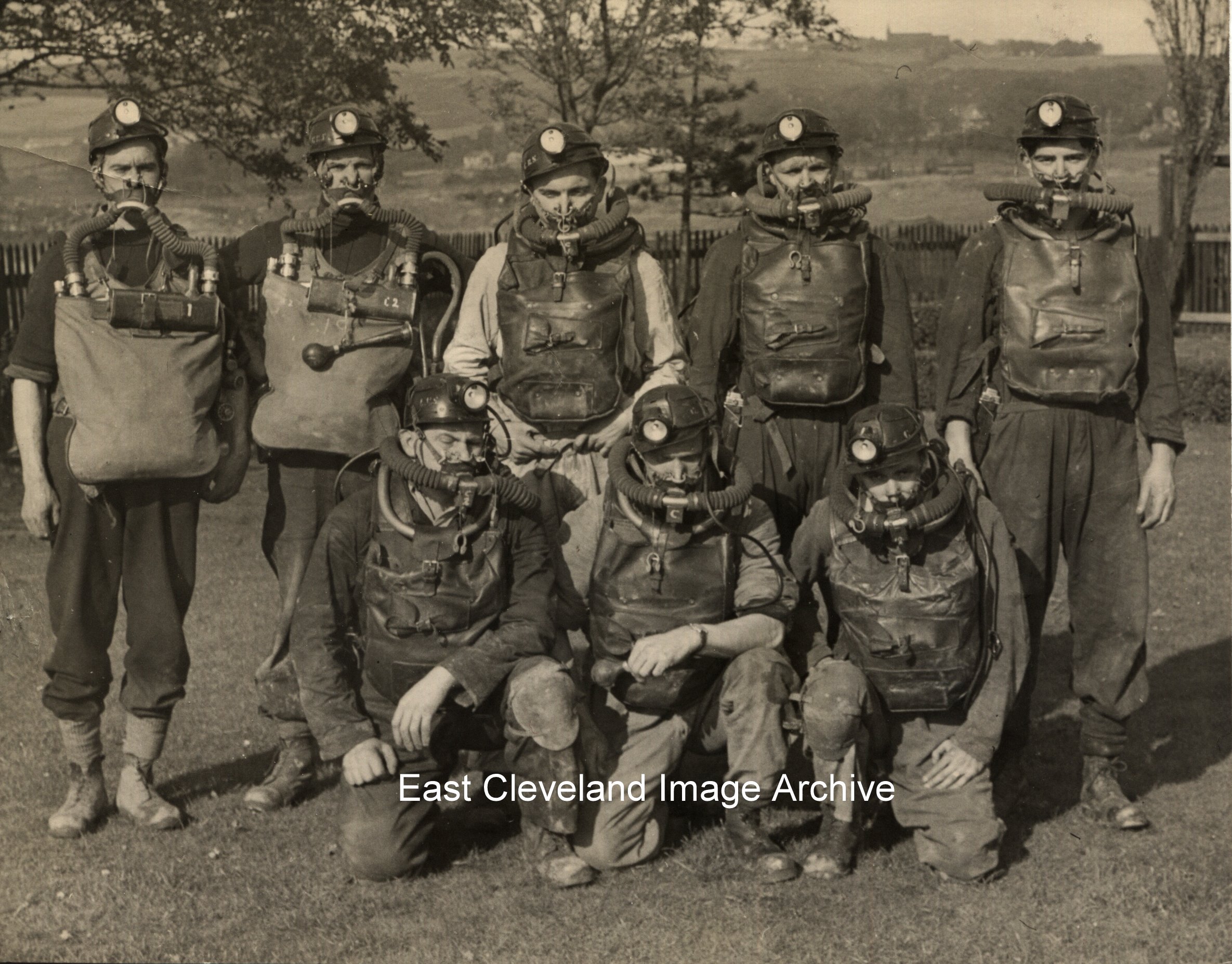
Not from outer space but from underground, we did not really know anything about this photo other than what was written on it: ”Crook rescue Team, Kilton Pit men. Dennis Pearson 1st Back”. Taken from the ’Evening Gazette’ Monday 3 May 1954: “Fourteen taken to hospital”. ‘Rescuers overcome in bid to save others. One Dead, 31 Gassed in Cleveland Mine’ One man was killed and 31 others were overcome by gas following an explosion at Kilton Ironstone mine, near Brotton today. The dead man was, Raymond Johnson age 40, loader man of 34 Gladstone Street, Loftus, whose body was brought to the surface about five hours after the explosion took place. Of the 31 overcome by gas were several of the rescue men; fourteen men were taken to hospitals in Redcar, Brotton and Guisborough, and the others treated on the spot. Helping the local mine rescue team were teams from Crook (two) Houghton le Spring and Benwell Tower, near Newcastle. Ambulances were sent from Redcar and Carlin Howe ‘Fire brigades help’ Middlesbrough Fire brigade and neighbouring fire authorities were asked to send resuscitation apparatus to the mine. It is believed that the explosion which displaced arches and roof supports occurred just before a three-man loader team started operations. The force of the blast blew Stanley Burton age 38 of 34 St Helens Walk, Liverton Mines and Iwan Dumoncie age 29 of 28 Tyne Street, East Loftus off their feet and threw them some distance. Burton suffering from cuts and abrasions was taken to the Guisborough Admiral Hospital, but the other man was allowed to go home.” It is worth visiting the Durham Mining Museum Site to read the full Mines Inspectors Report on this incident. Derick Pearson explained: ”This photograph was taken to show those associated with the clipping underneath it, and also because it was one of the rescue groups which covered many of the pits throughout the area including the coalfields. My father (Deputy) Dennis Pearson is first left standing on the back row. Next to him is Bob walker who lived at North Skelton at that time. The rest of the team I am certain were from different pits and on this occasion there were teams from 3 other pits. When I say team I mean 2 men teams in this instance. There were teams from Crook, Houghton le Springs and Benwell as well as others to drop back on in the event of a multiple disaster. The reason it was called Crook rescue team was because the rescue teams involved all travelled and practised their rescue methods at the mine at Crook. As my Father and Bob were from Kilton Pit the photo always got called “The Crook Rescue Team” by the local lads, hence the name on the back of it. Andrew Turnbull the Mine manager at Kilton Mine used to take my Father and Bob up to Crook in his vehicle, a Vauxhall Wyvern or Velox at that time. The Gas explosion rescue mentioned above was already in force before the rescue teams from the outlying Durham pits arrived and men like Rob Johnson and Bill Garbutt acted fearlessly trying to get their own mates out before the other teams came. The man who was killed was Raymond Johnson and was nicknamed ‘Chock Johnson’.” Many thanks to Derick for that explanation. Alan Featonby adds: ” I was at school with Andrew Turnbull’s son during the early 1960’s. At that time his father drove a Vauxhall Cresta ‘E’. It had the sun visor option and two tone paint, Gold and blue. Very stylish! My father had a 1955 Vauxhall Wyvern in gold, hence my recognition.”
Image courtesy of Carlin How Community Centre and from a collection compiled by Derick Pearson in 1983, additional information courtesy of Eric Johnson.
I actually worked down this mine, starting as a Sprog Boy and the going in-bye the drive a loco.
Wild Horses wouldn’t drag me underground again – a dangerous Job!
I was at school with Andrew Turnbull’s son during the early 1960’s. At that time his father drove a Vauxhall Cresta ‘E’. It had the sun visor option and two tone paint, Gold and blue. Very stylish! My father had a 1955 Vauxhall Wyvern in gold, hence my recognition.